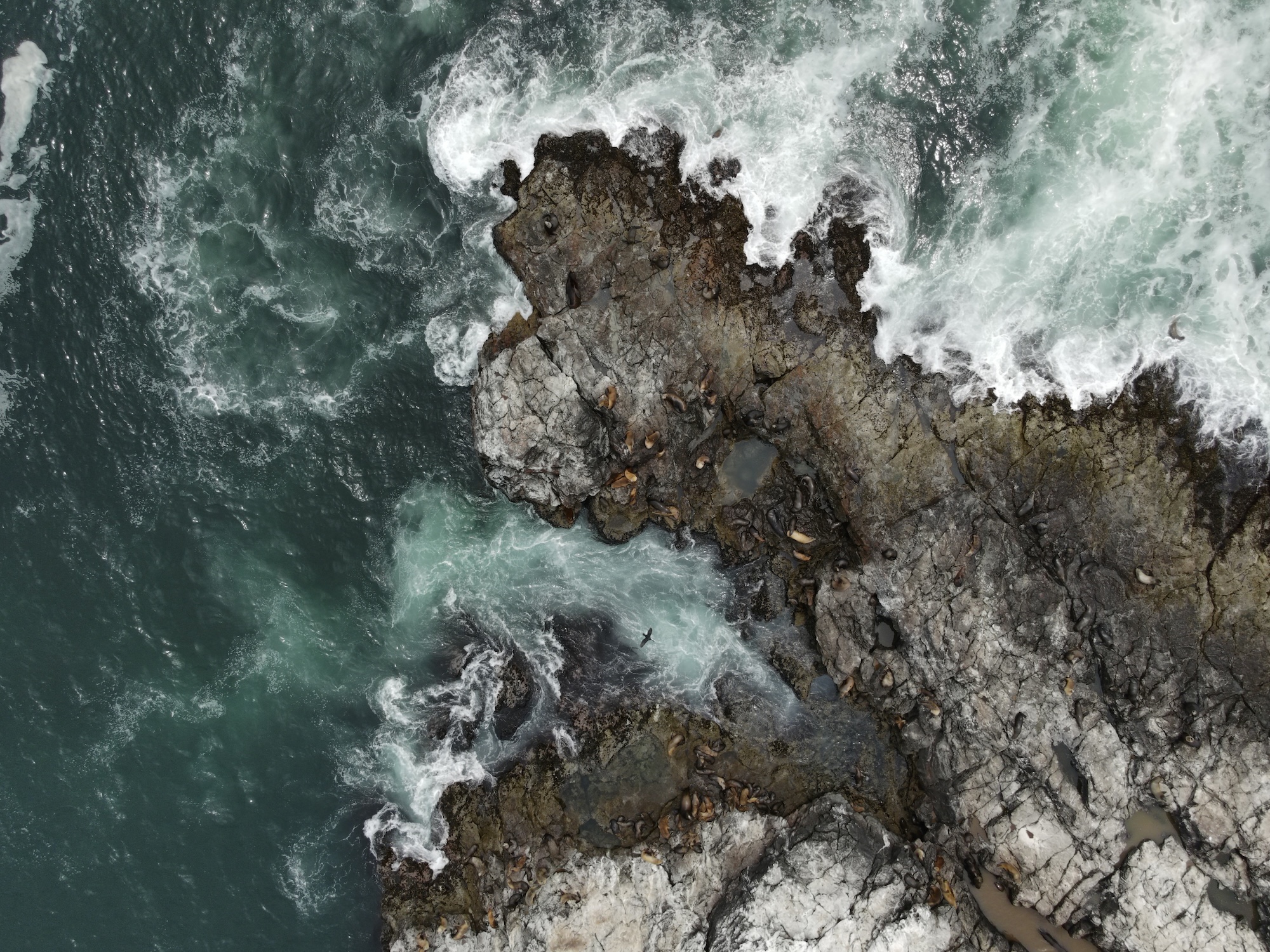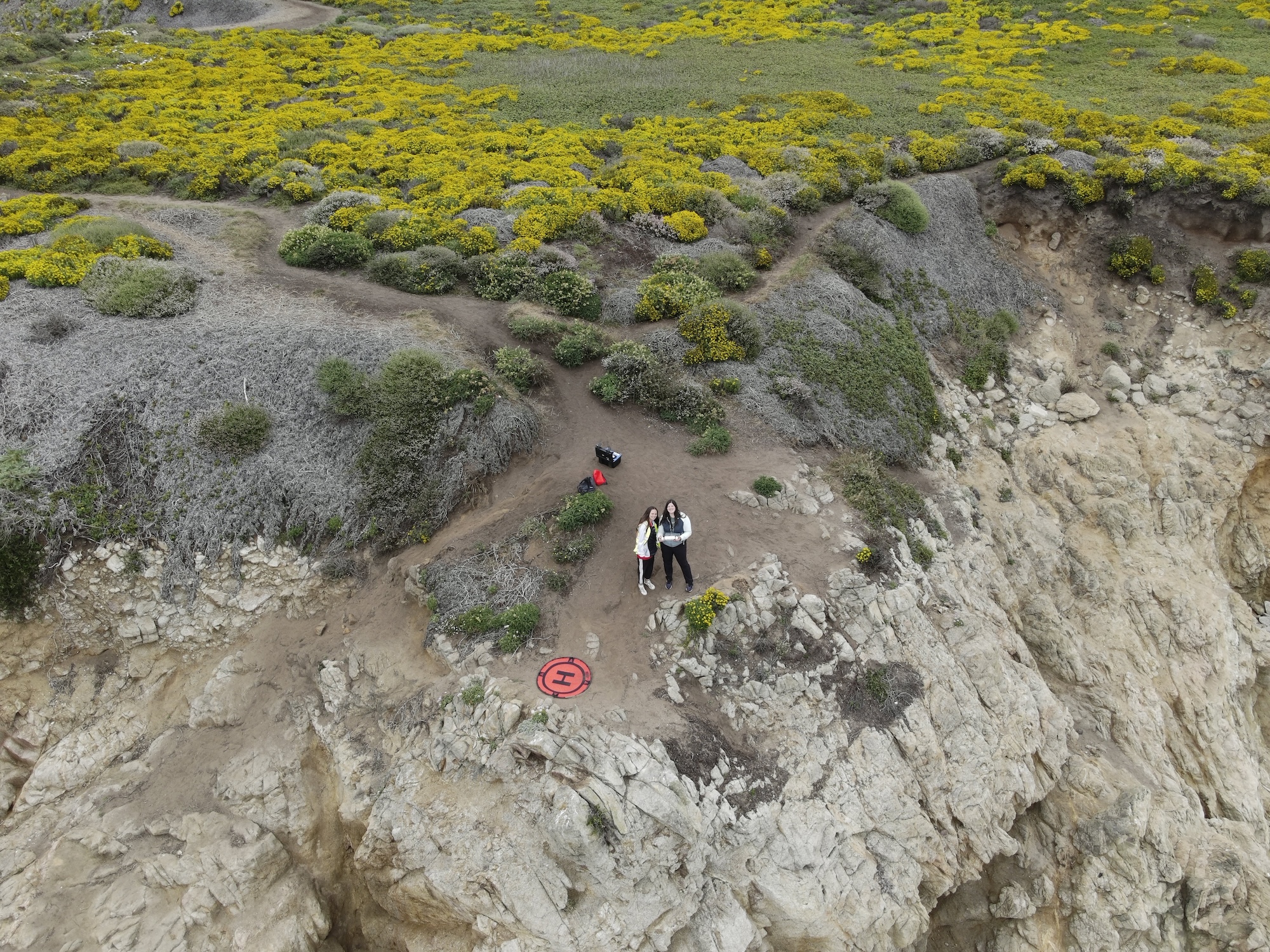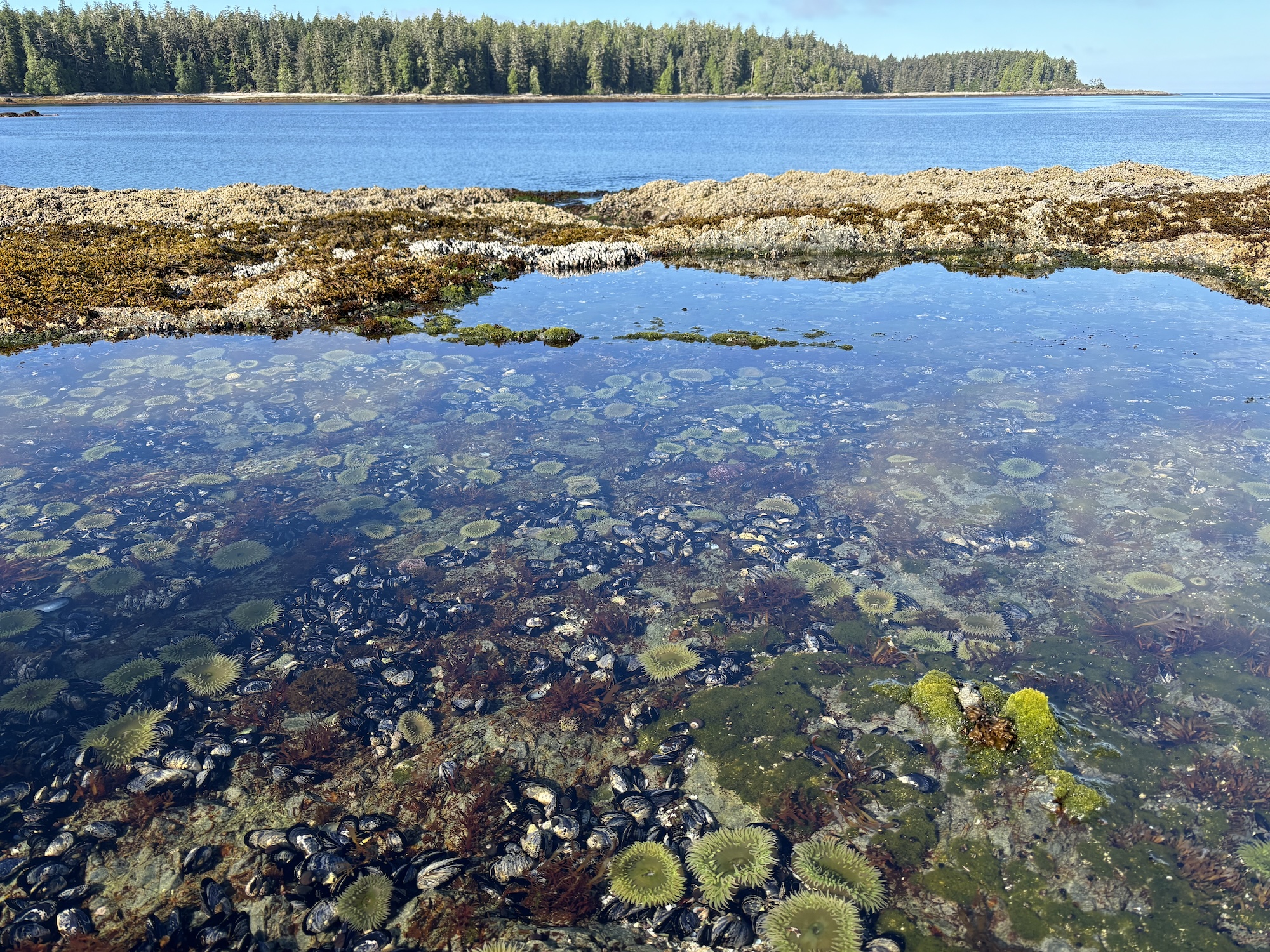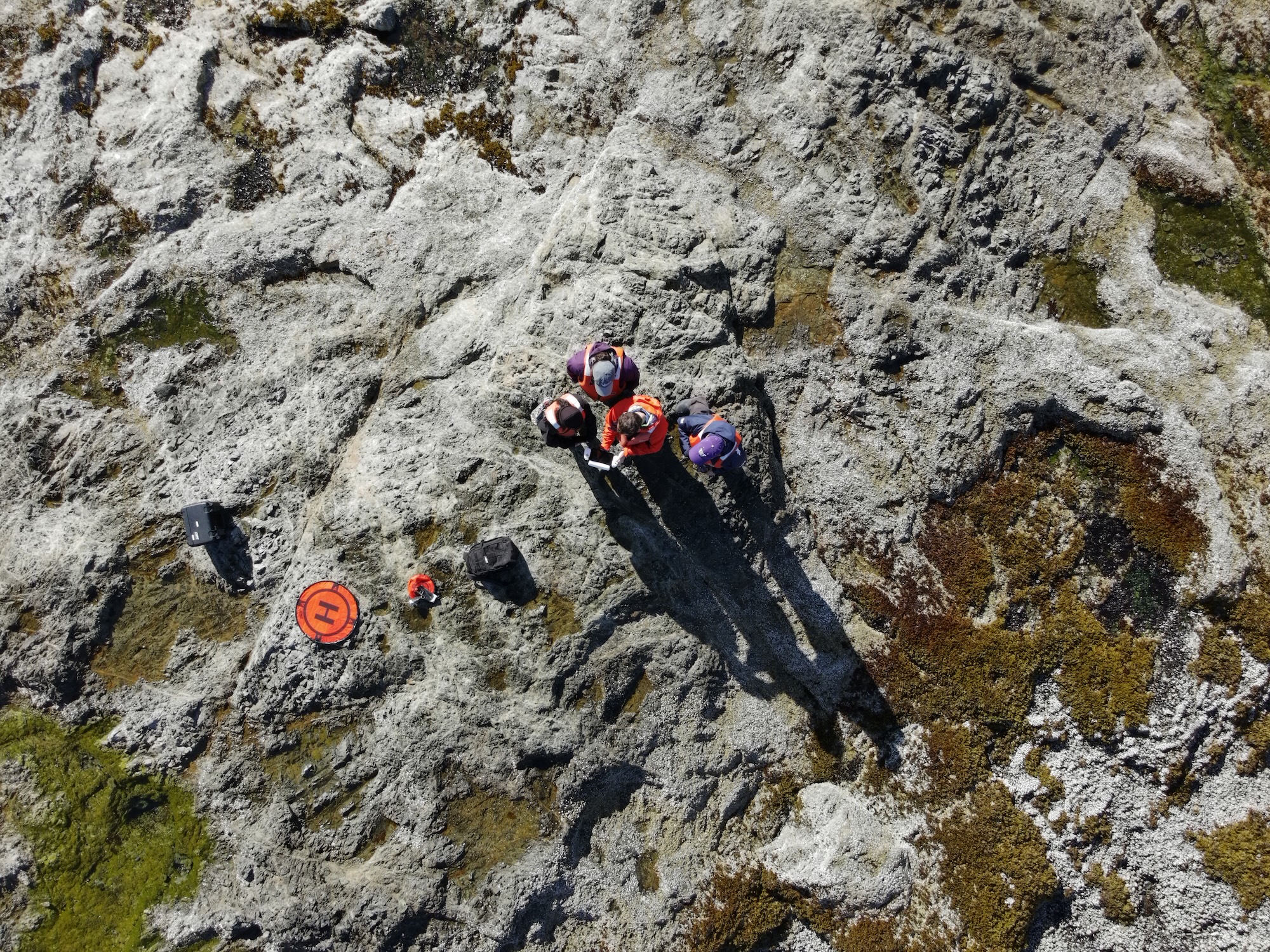From California to Canada: using drones for marine research
Over the course of two weeks, Marine Biology senior, Ashley Rendon, joined us to feature her work with the Marine Landscape Ecology Lab (MLEL), led by SAFS Professor Dr. Corey Garza. MLEL uses drones, GIS, and spatial statistics to study the marine environment.
While in Monterey, California, Ashley worked with the team to survey pinniped distribution along the rocks and shores of the coastline. Pinnipeds include fur seals, elephant seals, and sea lions. Using skills she picked up during her 2023 summer internship with NOAA, Ashley operated the drone to conduct transects by taking photos of every area of the rocks. When back in the lab, the pinnipeds are counted manually and compared to the AI system.

Why is research being conducted on pinniped distribution along the coast? We spoke to Dr. Corey Garza in February 2024 where he shared more about the collaborative project with other institutions to explore how the interaction between oceanographic conditions and the presence of marine mammals, such as pinnipeds, impacts the presence of great white sharks.

Heading northwards to British Columbia, Canada, the MLEL team joined up with Bamfield Marine Sciences Center to conduct high-resolution intertidal mapping work. The drone team were also testing out different types of sensors to help expand the type of data that can be collected in the coastal environment, such as visible light video versus multispectral camera. Head to the MLEL Instagram to see how these provide different insights!

The rocky intertidal is a frontline environment in the face of climate change and rising sea levels. Read our previous interview with Dr. Corey Garza on the environmental, cultural and economic importance of rocky intertidal habitats, and why it’s important to study them all along the coast from California to Canada.
Serving in the US Air Force for six years and currently serving in the Air National Guard while working towards her degree, Ashley took community college classes before transferring to the University of Washington. She participated in both the GEODUC and IBIS programs located within the UW College of the Environment, which are focused on enhancing equity and inclusion in marine science and has been a part of projects focused on genetics and R in the last two years through these programs.
